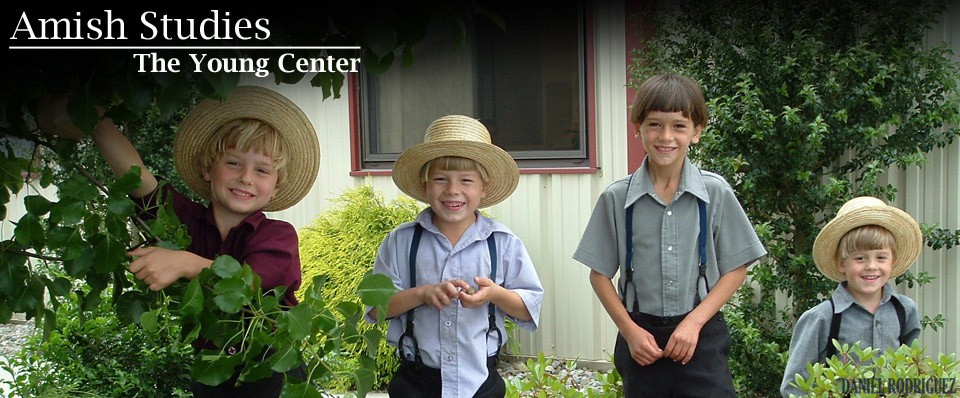Funerals
 Although funeral practices vary across Amish settlements, all reflect the core Amish values of simplicity, humility, and mutual aid, as family and friends yield to eternal verities.
Although funeral practices vary across Amish settlements, all reflect the core Amish values of simplicity, humility, and mutual aid, as family and friends yield to eternal verities.
The community springs into action at the word of a death. Family and friends assume farm, business, and household chores, freeing the immediate family. Funeral plans involve food preparation, seating arrangements, and accommodations for a large number of horses and carriages.
Well-established funeral rituals relieve the family of difficult funeral choices. In some settlements, a non-Amish undertaker moves the body to a funeral home for embalming. Within a day, the body, without cosmetic improvements, returns to the home in a simple, hardwood coffin. Family members of the same sex dress the body in white. Deceased women may wear the white cape and apron worn at their wedding.
Friends and relatives visit the family and view the body in a room on the first floor of the home for two days prior to the funeral. Meanwhile, community members dig the grave by hand in a nearby family cemetery. Several hundred guests attend the funeral, which is held in a barn, a shop, or the family’s home. During the simple hour-and-a-half service, ministers read hymns and scriptures, offer prayers, and preach a sermon.
The hearse, a large, black carriage pulled by horses, leads a long procession of other carriages to the burial ground. A brief viewing and graveside service mark the return of dust to dust. Pallbearers lower the coffin and shovel soil into the grave as the bishop reads a hymn. Small, equal-sized tombstones indicate the place of the deceased in the community of equality. Close friends and family members then return to the home for a meal.
Additional information
- See pp. 247-49 of chapter 13 in Donald B. Kraybill, Karen M. Johnson-Weiner, and Steven M. Nolt, The Amish (Baltimore: Johns Hopkins University Press, 2013).
- See chapter 8, “A Big Valley Amish Funeral,” in Stephen E. Scott, The Amish Wedding and Other Special Occasions of the Old Order Communities (Intercourse, PA: Good Books, 1988).
